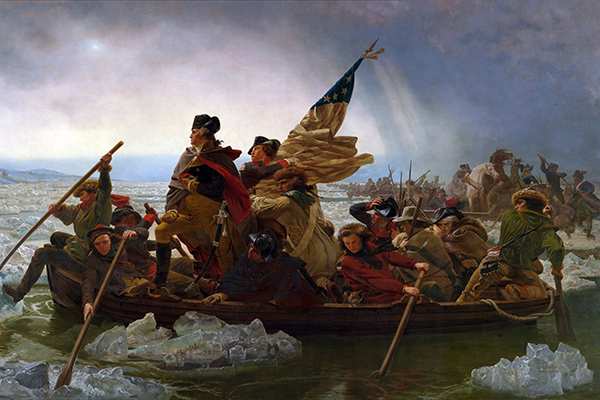Each year on Christmas Day, Americans nationwide take time to enjoy the company of family and friends. While the annual celebration is usually marked by relaxation, good food, and holiday cheer, it often looks quite different for our nation’s troops.
A number of military events have occurred on December 25 throughout the history of the United States, according to the US Department of Defense. Here’s a look at a few significant military battles from Christmas Day:
The Battle of Trenton

Just a few days into the winter of 1776, General George Washington faced a challenge. His Continental Army had suffered countless defeats in the American Revolution, and with morale already running low, he and is troops were pushed out of New York and New Jersey into a snow-covered Pennsylvania.
Washington knew he needed to do something to boost his troops’ faith in the fight for independence. So, on Christmas night, Washington and his army boarded boats and rowed across the icy Delaware River to surprise the Hessians, a group of German soldiers hired by the British, who Washington bet would be unprepared to fight following holiday celebrations.
Washington’s gamble paid off. As the sun rose on December 26, roughly 2,400 bitterly-cold Continental soldiers pushed into Trenton, New Jersey, surprising their German enemy who quickly surrendered.
What eventually became known as the Battle of Trenton, Washington’s mission was a resounding success, reinvigorating the weary Continental troops who were beginning to question whether independence was attainable at all.
The Union taking Fort Fisher

On Christmas 1864, Fort Fisher in North Carolina became the target of the Union who sought to capture the last port the Confederates had on the Atlantic Ocean.
But the mission didn’t go as smoothly as the Union hoped.
In the Union’s first attempt to take Fort Fisher, northern soldiers packed a warship with explosives in the hopes of blowing up the Confederate fort’s walls. Much to the dismay of the Union, the ship itself exploded, alerting the southern soldiers of the attack.
Then on Christmas Eve, the Union made another attempt, this time with an onslaught of firepower. Again, the north’s efforts failed as most of the gunfire fell short or missed its target.
The following morning, Christmas day, Union commanders attempted to attack an area just north of the fort in an effort to send troops ashore. But once again, the mission failed – Fort Fisher’s heavy artillery withstood the attack without harm, forcing the Union to order a disappointing retreat.
It wasn’t until a month later that the Union was finally able to take the fort, preventing the Confederates from engaging in global trade for supplies. Three months after the Union’s success at Fort Fisher, the Civil War ended.
Operation Linebacker II and the 11 Days of Christmas

For the United States military, the Christmas season of 1972 was marked by the biggest bombing mission in military history. Dubbed Operation Linebacker II, the air campaign is often credited with ending America’s part in the Vietnam War.
After North Vietnamese officials abandoned peace talks, then-President Richard Nixon ordered the bombings to commence on December 18.
Operation Linebacker, often called the “11 Days of Christmas”, involved 11 consecutive days B-52 Stratofortress bomber raids in Guam.
The operation was suspended for 36 hours on Christmas day in order to allow troops to celebrate. During the break, Nixon called on North Vietnam to begin peace talks once again, but the country refused. As a result, the operation continued until December 29 when North Vietnamese authorities finally agreed to revisit the bargaining table.
All told, Operation Linebacker II dropped 15,000 tons of bombs from 729 U.S. Air Force aircraft and roughly 12,000 airmen. The raid impacted 1,600 structures, 500 rail targets, 10 airfields and 80 percent of the country’s electric-generating capacity.
Unfortunately, 15 U.S. B-52s were destroyed during the operation, leading to the death of 35 men and the capture of roughly 40 Americans.
Their sacrifice ultimately led to the Paris Peace Accords in January 1973, which were formed from the peace talks that resumed as a result the raid.



